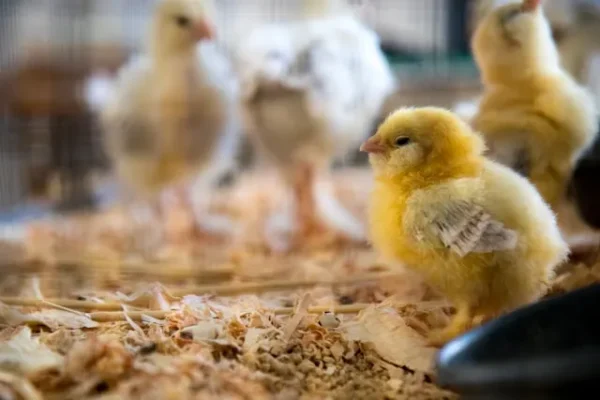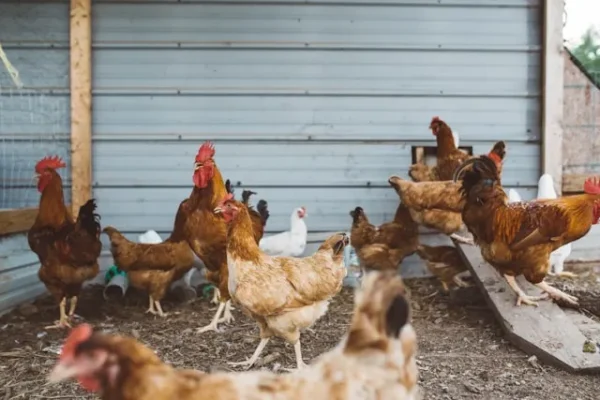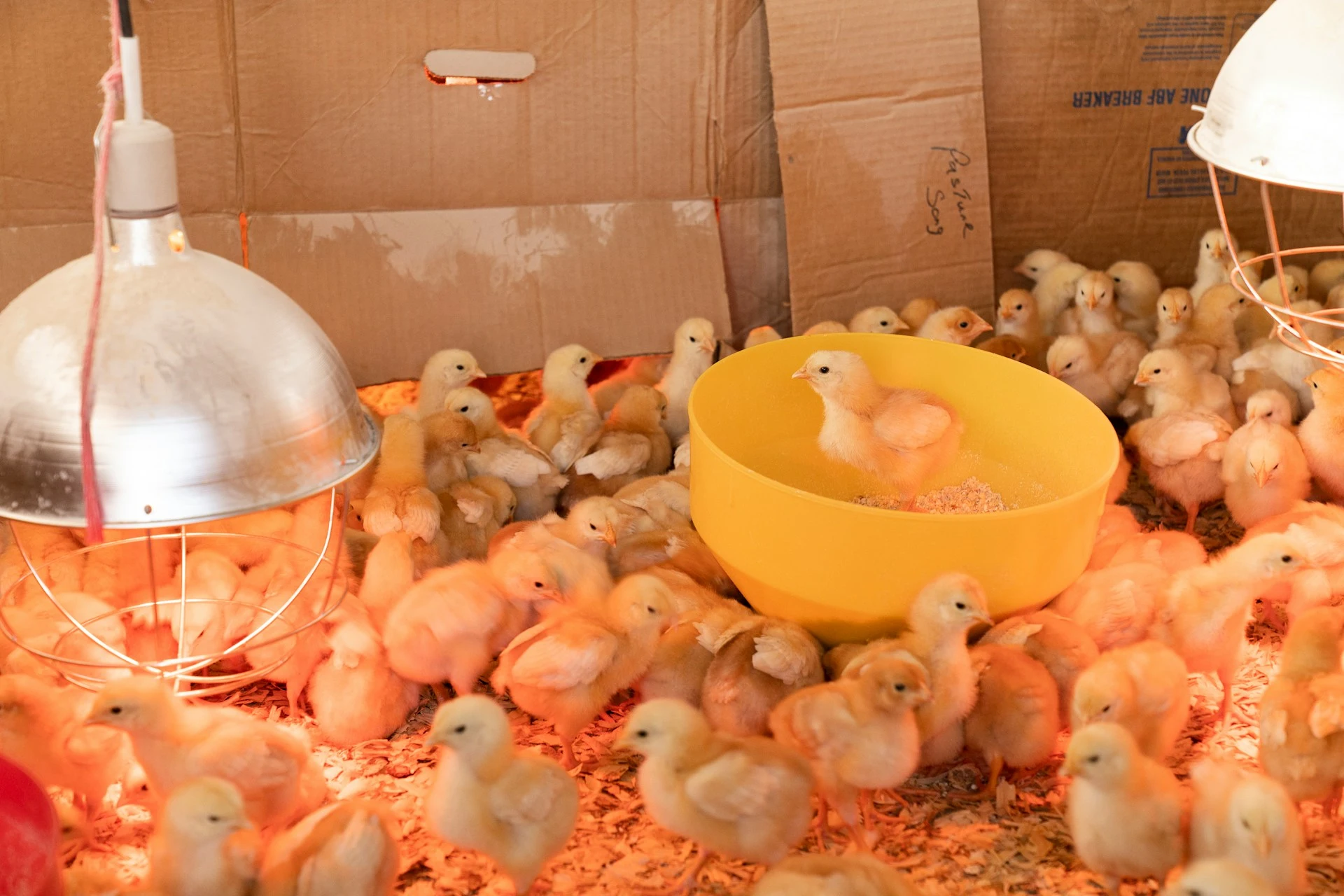Every poultry farm owner, has a desire not only to rear birds, but also to make significant success for his/her investment. In this blog post, we would learn the top strategies for running a profitable poultry farm, keeping your birds healthy, feeding your flock, and creating a marketing strategy.
Understanding the Basics of Poultry Farming
Poultry farming, also known as aviculture, is the practice of raising domestic birds such as chickens, ducks, turkeys, and geese for their meat, eggs, and feathers. It plays a vital role in global food production, providing a significant source of protein-rich food for millions of people worldwide.
Poultry farming is popular due to its relatively low startup costs, high feed conversion efficiency, and rapid turnover rate compared to other livestock farming ventures.
Poultry farming presents a fulfilling opportunity, offering both a stable income and the gratification of cultivating your own sustenance. Nonetheless, it comes with its share of hurdles. Poultry farmers must adeptly manage fluctuating market dynamics, uphold the welfare of their flock, and adhere to regulatory standards.
Choosing the Right Poultry Breeds for Successful Poultry Farming
In our attempt to choose the most profitable bird type right poultry breeds, it is important for us to carry out research on market trends and analyze your resources (land, capital, experience). Are eggs in high demand locally? Do you have the capital for a larger broiler operation? The plan ensures you’re not raising birds for a market that’s saturated.
When selecting poultry breeds for your farm, consider factors such as egg production, meat quality, adaptability to local climates, and disease resistance. Popular poultry breeds for egg production include White Leghorn, Rhode Island Red, and Plymouth Rock, known for their high egg-laying capacity.
For meat production, breeds like Cornish Cross and Broad Breasted White Turkey are favored for their fast growth rates and desirable meat quality.
Setting Up Your Poultry Farm
The plan helps you decide on the most efficient and cost-effective housing system for your chosen bird. Considering factors like cage type, ventilation, and waste management in the plan upfront saves you money on redesigning a poorly planned coop later.
Location can make a huge difference. You want to pick a spot with plenty of space and easy access to clean water. It’s also important that the area drains well, so there’s no standing water that could make your birds sick. Design your chicken coops or houses in a way that lets air and sunlight in naturally. Make sure there are clear paths for you to move around and for your chickens to roam.
Also, if you have the luxury of choosing a location, think about how close your farm will be to places where you can sell your chickens or buy supplies. Being nearby can save you time and money on transportation.
Essential Equipment for Successful Poultry Farming
Brooders
These are heated enclosures used to keep chicks warm during their early days. They mimic the warmth of a mother hen and help newly hatched chicks stay healthy and active.
Feeders
Poultry need a balanced diet to grow and produce eggs effectively. Feeders are containers designed to hold poultry feed, ensuring that birds have easy access to nutritious food at all times.
Drinkers
Just like humans, poultry need constant access to clean water for hydration and digestion. Drinkers are specialized containers or systems that provide birds with a steady supply of fresh water.

Incubators
In large-scale poultry farming, artificial incubators are often used to hatch eggs. These machines carefully control temperature and humidity levels to create optimal conditions for egg development until they hatch into healthy chicks.
Ventilation System
Good air quality is crucial for poultry health. Ventilation systems, including fans and vents, help regulate temperature, humidity, and air circulation within poultry houses, preventing the buildup of harmful gases and reducing the risk of respiratory diseases
Feeding and Nutrition Management
Choosing the right feed is crucial for the health and growth of your chickens and success of your poultry farm. Just like humans, chickens have different nutritional requirements depending on their age and purpose. For example, chicks need feed specifically formulated for their rapid growth and development. Look for starter feeds that contain higher levels of protein to support muscle and feather development.
As your chicks grow into adult hens or roosters, transition them to a different type of feed formulated to meet their mature nutritional needs. Layer feed, for instance, is designed for hens laying eggs and contains higher levels of calcium to support strong eggshells.
Always carefully follow the feeding instructions provided on the feed bag to ensure that your chickens receive the appropriate amount of nutrition without overfeeding or underfeeding.
As earlier highlighted, clean water is essential for maintaining the health and well-being of your chickens. Make sure to provide a clean water source in your poultry farm that is easily accessible to your birds at all times. Consider using a waterer specifically designed for chickens, as it helps prevent contamination from droppings and keeps the water clean for longer periods.
During colder months, it’s important to prevent water from freezing, as chickens still need access to water even in chilly weather. Consider using a heated waterer or regularly checking and replacing water to ensure it doesn’t freeze over. Dehydration can lead to health issues and decreased egg production, so ensuring access to clean, unfrozen water is crucial for your flock’s health and productivity while maintaing success in the poultry farm business.
Health and Disease Management in Poultry Farm
Preventing diseases in your poultry farm is key to maintaining their health and productivity. One crucial preventive measure is vaccination. Vaccines help protect chickens from common diseases such as Newcastle disease, infectious bronchitis, and Marek’s disease.
Developing a vaccination schedule in consultation with a veterinarian is essential to ensure that your flock receives timely and appropriate vaccinations.
Implementing biosecurity protocols is another vital aspect of disease prevention. Biosecurity measures help prevent the introduction and spread of diseases onto your farm. This includes limiting access to your poultry farm, practicing strict hygiene protocols, and disinfecting equipment and vehicles that come into contact with your birds.
Regular hygiene practices, such as cleaning and disinfecting poultry housing, feeders, and drinkers, also play a crucial role in disease prevention. Removing accumulated litter and waste helps reduce the risk of bacterial and viral contamination, creating a healthier environment for your birds.
Vaccination schedule for Poultry Farm
| Week of Vaccination | Type of Vaccination |
|---|---|
| Day old | Marek’s |
| 15 days (1/2 dose) | Infectious Bursal |
| 20 days (1/2 dose) | Infectious Bursal |
| 25 days | Bronchitis, New Castle, Infectious Bursal (Typical Brand name Combo Vec. 30) |
| 30 days | Bronchitis, New Castle, Infectious Bursal (Typical Brand name Combo Vec. 30) |
| 49 days | Bronchitis, New Castle, Infectious Bursal (Typical Brand name Combo Vec. 30) |
| 10 Weeks | Fowl Pox and Laryngotracheitis (commonly referred to as LT) |
| 12 Week | Combo Vac 30 |
| 13 Week | Avian Encephalomyelitis (commonly referred to as AE) |
| 16 Week | New Castle |
Types of Poultry Farm Disease
Fowl Pox
The dry form of fowl pox is characterized by raised, wart-like lesions on unfeathered areas (head, legs, vent, etc.). In laying hens, infection results in a transient decline in egg production. In the wet form there are canker-like lesions in the mouth, pharynx, larynx, and trachea. The wet form may cause respiratory distress by obstructing the upper air passages.
Treatment – No treatment is available. However, fowl pox is relatively slow-spreading. Thus, it is possible to vaccinate to stop an outbreak.
Prevention – Fowl pox outbreaks in poultry confined to houses can be controlled by spraying to kill mosquitoes. However, if fowl pox is endemic in the area, vaccination is recommended.
Newcastle Disease
Newcastle disease is characterized by a sudden onset of clinical signs which include hoarse chirps (in chicks), watery discharge from nostrils, laboured breathing (gasping), facial swelling, paralysis, trembling, and twisting of the neck (sign of central nervous system involvement). Mortality ranges from 10 to 80 per cent depending on the pathogenicity.
Treatment – There is no specific treatment for Newcastle disease. Antibiotics can be given for 3-5 days to prevent secondary bacterial infections. For chicks, increasing the brooding temperature 5°F may help reduce losses.
Prevention – Prevention programs should include vaccination, good sanitation, and implementation of a comprehensive biosecurity programme.
Infectious Bronchitis
The severity of infectious bronchitis infection is influenced by the age and immune status of the flock, by environmental conditions, and by the presence of other diseases. Feed and water consumption decline. Affected chickens will be chirping, with a watery discharge from the eyes and nostrils, and laboured breathing with some gasping in young chickens. Breathing noises are more noticeable at night while the birds rest. Egg production drops dramatically. Eggshells become rough and the egg white becomes watery.
Treatment – There is no specific treatment. Antibiotics for 3-5 days may aid in combating secondary bacterial infections. Raise the room temperature 5°F for brooding-age chickens until symptoms subside. Baby chicks can be encouraged to eat by using a warm, moist mash.
Prevention – Establish and enforce a biosecurity program. Vaccines are available.
Avian Influenza
Avian influenza is categorized as mild or highly pathogenic. The mild form produces listlessness, loss of appetite, respiratory distress, diarrhea, transient drops in egg production. The highly pathogenic form produces facial swelling, blue comb and wattles, and dehydration with respiratory distress. Dark red/white spots develop in the legs and combs of chickens. There can be blood-tinged discharge from the nostrils. Mortality can range from low to near 100 per cent. Sudden exertion adds to the total mortality. Egg production and hatchability decreases. There can be an increase in production of soft-shelled and shell-less eggs.
Treatment – There is no effective treatment. With the mild form of the disease, good husbandry, proper nutrition, and broad spectrum antibiotics may reduce losses from secondary infections. Recovered flocks continue to shed the virus.
Prevention – A vaccination programme used in conjunction with a strict quarantine has been used to control mild forms of the disease. With the more lethal forms, strict quarantine and rapid destruction of all infected flocks remains the only effective method of stopping an avian influenza outbreak. If you suspect you may have Avian Influenza in your flock, even the mild form, you must report it to the state veterinarian’s office.
Infectious Laryngotracheitis
Chickens 14 weeks and older are more susceptible than young chickens. Most outbreaks occur in mature hens. The clinical sign usually first noticed is watery eyes. Affected birds remain quiet because breathing is difficult. Coughing, sneezing, and shaking of the head to dislodge exudate plugs in the windpipe follow. Birds extend their head and neck to facilitate breathing (commonly referred to as “pump handle respiration”). Inhalation produces a wheezing and gurgling sound. Blood-tinged exudates and serum clots are expelled from the trachea of affected birds. Many birds die from asphyxiation due to a blockage of the trachea when the tracheal plug is freed.
Treatment – Administer antibiotics to control secondary infection, and vaccinate the flock. Vaccination of individual bird by the eye-drop route is suggested. In small poultry flocks, use a swab to remove plug from gasping birds.
Prevention – Vaccinate replacement birds for outbreak farms.
Mycoplasma synoviae
Birds infected with the synovitis form show lameness, followed by lethargy, reluctance to move, swollen joints, stilted gait, loss of weight, and formation of breast blisters. Birds infected with the respiratory form exhibit respiratory distress. Greenish diarrhea is common in dying birds.
Treatment – Recovery is slow for both respiratory and synovitis forms. The most effective antibiotics are tylosin, erthromycin, spectinomycin, lincomycin, and chlorotectracycline. These treatments are most effective when the antibiotics are injected.
Prevention – Eradication is the best and only sure control
Aspergillosis
Aspergillosis occurs as an acute disease of young birds and a chronic disease in mature birds. Young birds have trouble breathing and gasp for air. Characteristically, there are no rales or respiratory sounds associated with aspergillosis. Feed consumption decreases. Occasionally there is paralysis or convulsions caused by the fungal toxin. Mortality in young birds averages 5-20 per cent, but may be as high as 50 per cent. Mature birds also have respiratory distress, reduced feed consumption, and may have a bluish and dark colour of the skin (cyanosis). Nervous disorders, such as twisted necks, may occur in a few birds. Mortality in mature birds is usually less than 5 per cent.
Treatment – There is no cure for infected birds. The spread can be controlled by improving ventilation, eliminating the source of the infection, and adding a fungistat (mycostatin, mold curb, sodium or calcium propionate, or gentian violet) to the feed and/or copper sulfate or acidified copper in the drinking water for 3 days. The litter can be sprayed lightly with an oil-base germicide to control dust and air movement of fungal spores.
Prevention – It is important to thoroughly clean and disinfect the brooding area between broods. Use only clean litter, preferably soft wood shavings. Do not use sawdust, litter high in bark content, or shavings that have been wet.
Marek’s Disease
Marek’s disease is a type of avian cancer. Tumours in nerves cause lameness and paralysis. Tumours can occur in the eyes and cause irregularly shaped pupils and blindness. Tumours of the liver, kidney, spleen, gonads, pancreas, proventriculus, lungs, muscles, and skin can cause incoordination, unthriftiness, paleness, weak labored breathing, and enlarged feather follicles. In terminal stages, the birds are emaciated with pale, scaly combs and greenish diarrhea. Marek’s disease is very similar to Lymphoid Leukosis, but Marek’s usually occurs in chickens 12 to 25 weeks of age and Lymphoid Leukosis usually starts at 16 weeks of age.
Treatment – none
Prevention – Chicks can be vaccinated at the hatchery. While the vaccination prevents tumour formation, it does not prevent infection by the virus.
Lymphoid Leukosis
The virus involved has a long incubation period (4 months or longer). As a result, clinical signs are not noticeable until the birds are 16 weeks or older. Affected birds become progressively weaker and emaciated. There is regression of the comb. The abdomen becomes enlarged. Greenish diarrhea develops in terminal stages.
Treatment
none
Prevention
The virus is present in the yolk and egg white of eggs from infected hens. Most national and international layer breeders have eradicated lymphoid leukosis from their flocks.
Infectious Bursal Disease
In affected chickens greater than 3 weeks of age, there is usually a rapid onset of the disease with a sudden drop in feed and water consumption, watery droppings leading to soiling of feathers around the vent, and vent pecking. Feathers appear ruffled. Chicks are listless and sit in a hunched position. Chickens infected when less than 3 weeks of age do not develop clinical disease, but become severely and permanently immunosuppressed.
Treatment – There is no specific treatment. Vitamin- electrolyte therapy is helpful. High levels of tetracyclines are contraindicated because they tie up calcium, thereby producing rickets.
Prevention – Vaccine is commercially available.
Avian Encephalomyelitis
Signs commonly appear during the first week of life and between the second and third weeks. Affected chicks may first show a dull expression of the eyes, followed by progressive incoordination, sitting on hocks, tremors of the head and neck, and finally paralysis or prostration. Some may refuse to walk or will walk on their hocks. In advanced cases, many chicks will lie with both feet out to one side (prostrate) and die.
All stages (dullness, tremors, prostration) can usually be seen in an affected flock. Feed and water consumption decreases and the birds lose weight. In adult birds, a transitory drop (5-20 per cent) in egg production may be the only clinical sign present. However, in breeding flocks, a corresponding decrease in hatchability is also noted as the virus is egg- transmitted until hens develop immunity. Chickens which survive the clinical disease may develop cataracts later in life.
Treatment – There is no treatment for outbreaks. Infected birds should be removed, killed and incinerated. Recovered chicks are unthrifty.
Prevention – Vaccine is available.
Egg Drop Syndrome
There are no reliable signs other than the effects on egg production and egg quality. Healthy-appearing hens start laying thin-shelled and shell-less eggs. Once established, the condition results in a failure to achieve egg production targets. Transient diarrhea and dullness occur prior to egg shell changes. Fertility and hatchability are not affected.
Treatment – There is no successful treatment. Induced molting will restore egg production.
Prevention – Prevention involves a good biosecurity program.
Fowl Cholera
Fowl cholera usually strikes birds older than 6 weeks of age. In acute outbreaks, dead birds may be the first sign. Fever, reduced feed consumption, mucoid discharge from the mouth, ruffled feathers, diarrhea, and laboured breathing may be seen. As the disease progresses birds lose weight, become lame from joint infections, and develop rattling noises from exudate in air passages. As fowl cholera becomes chronic, chickens develop abscessed wattles and swollen joints and foot pads. Caseous exudate may form in the sinuses around the eyes. Turkeys may have twisted necks.
Treatment – A flock can be medicated with a sulfa drug (sulfonamides, especially sulfadimethoxine, sulfaquinonxalene, sulfamethazine, and sulfaquinoxalene) or vaccinated, or both, to stop mortality associated with an outbreak. It must be noted, however, that sulfa drugs are not FDA approved for use in pullets older than 14 weeks or for commercial laying hens. Sulfa drugs leave residues in meat and eggs. Antibiotics can be used, but require higher levels and long term medication to stop the outbreak.
Prevention – On fowl cholera endemic farms, vaccination is advisable. Do not vaccinate for fowl cholera unless you have a problem on the farm. Rodent control is essential to prevent future outbreaks.
Omphalitis
Affected chicks may have external navel infection, large unabsorbed yolk sacs, peritonitis with foetid odour, exudates adhering to the navel, oedema of the skin of ventral body area, septicemia and dehydration.
Treatment – There is no specific treatment for omphalitis. Most affected birds die in the first few days of life.
Prevention – Control is by prevention through effective hatchery sanitation, hatchery procedures, breeder flock surveillance, and proper preincubation handling of eggs. Mushy chicks should be culled from the hatch and destroyed.

Pullorum
Death of infected chicks begins at 5-7 days of age and peaks in another 4-5 days. Clinical signs – huddling, droopiness, diarrhoea, weakness, pasted vent, gasping, and chalk-white feces, sometimes stained with green bile. Affected birds are unthrifty and stunted because they do not eat. Survivors become asymptomatic carriers with localized infection in the ovary.
Treatment – Treatment is for flock salvage only. Several sulfonamides, antibiotics, and antibacterials are effective in reducing mortality, but none eradicates the disease from the flock.
Prevention – Pullorum outbreaks are handled, on an eradication basis. Breeder replacement flocks should be tested before onset of production to assure pullorum- free status.
Necrotic Enteritis
Rapidly growing young birds, especially chickens 2-12 weeks of age, are most susceptible. Initially there is a reduction in feed consumption as well as dark, often blood-stained, faeces. Infected chickens will have diarrhoea. Chronically affected birds become emaciated. The bird, intestines, and faeces emit a faetid odour.
Treatment – The clostridia bacteria involved in necrotic enteritis are sensitive to the antibiotics bacitracin, neomycin, and tetracycline. However, antibiotics such as penicillin, streptomycin, and novobiocin are also effective. Bacitracin is the most commonly used drug for control of necrotic enteritis.
Prevention – Prevention is directed toward sanitation, husbandry and management.
Staphylococcus
Infections appear in three forms – septicemia (acute), arthritic (chronic) and bumblefoot. The septicaemia form appears similar to fowl cholera in that the birds are listless, without appetite, feverish, and show pain during movement. Black rot may show up in eggs (the organism is passed in the egg). Infected birds pass fetid watery diarrhea.
Many will have swollen joints (arthritis) and production drops. The arthritic form follows the acute form. Birds show symptoms of lameness and breast blisters, as well as painful movement. Birds are reluctant to walk, preferring to sit rather than stand. Bumblefoot is a localized chronic infection of the foot, thought to be caused by puncture injuries. The bird becomes lame from swollen foot pads.
Treatment – Novobiocin (350 g/ton) can be given in the feed for 5-7 days. Erythromycin and penicillin can be administered in the water for 3-5 days or in the feed (200 g/ton) for 5 days. Other antibiotics and drugs are only occasionally effective.
Prevention – Remove objects that cause injury. Isolate chronically affected birds. Provide nutritionally balanced feed.
Poultry Biosecurity Plan
Before investing into buying disinfectants, it is essential that the poultry farmmanager follows the principles to prepare a poultry biosecurity plan.
- An employee of the farm should be trained and designated as the biosecurity officer.
- A log showing the frequency of trainings and pep talks organized within the farm should be kept to keep track of capacity built within the farm.
- The areas of the farm that have been disinfected should be differentiated from the non-disinfected areas to ensure that cross contamination is controlled. Foot baths should also be sited at the area demarcating the “clean” area from the “unclean” area.
- The perimeter buffer areas such as hot and cold or clean and unclean areas should be boldly marked.
Read About Coronavirus in Poultry
Marketing of Poultry Farm Products
Identifying Target Markets
Understanding your target market is crucial for effectively selling your poultry products. Start by researching consumer preferences, demand trends, and competition in your area. Identify potential customers who are likely to purchase your poultry products based on factors such as demographics, lifestyle choices, and dietary preferences.
For example, if there is a growing trend towards organic and locally sourced food in your area, you may target health-conscious consumers who value freshness and sustainability. Similarly, if there is a high demand for specialty poultry products such as free-range eggs or heritage breed chickens, you may cater to niche markets seeking premium-quality products.
By analyzing market data and consumer behavior, you can identify the most profitable market segments to focus your marketing efforts on.
Utilizing Various Marketing Channels
Once you’ve identified your target markets, utilize a mix of marketing channels to reach customers and maximize sales opportunities. Consider leveraging both traditional and digital marketing channels to expand your reach and connect with diverse audiences.
Local markets: Participating in farmers’ markets, food fairs, and community events is an effective way to showcase your poultry products directly to local consumers. Build relationships with customers and educate them about the quality and benefits of your products.
Online platforms: Establish an online presence through a professional website and social media platforms. Showcase your poultry products through high-quality images and engaging content. Utilize e-commerce platforms to sell your products online and reach customers beyond your local area.
Direct sales: Offer direct sales options such as farm gate sales, subscription services, or home delivery to provide convenience to customers and build loyalty. Develop personalized relationships with customers and offer excellent customer service to encourage repeat purchases and word-of-mouth referrals.
By utilizing a combination of marketing channels tailored to your target markets, you can effectively promote your poultry products, increase brand visibility, and maximize sales opportunities in your area and beyond.

